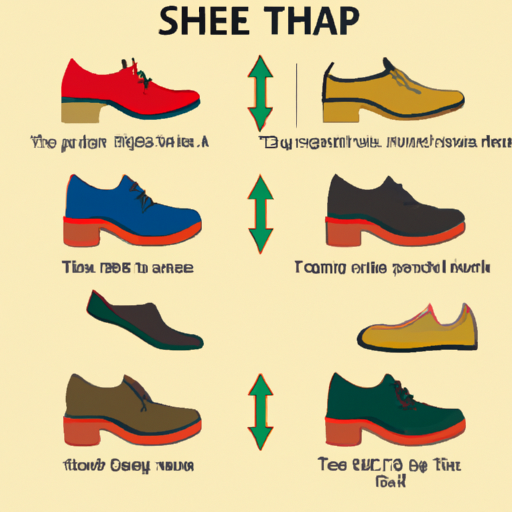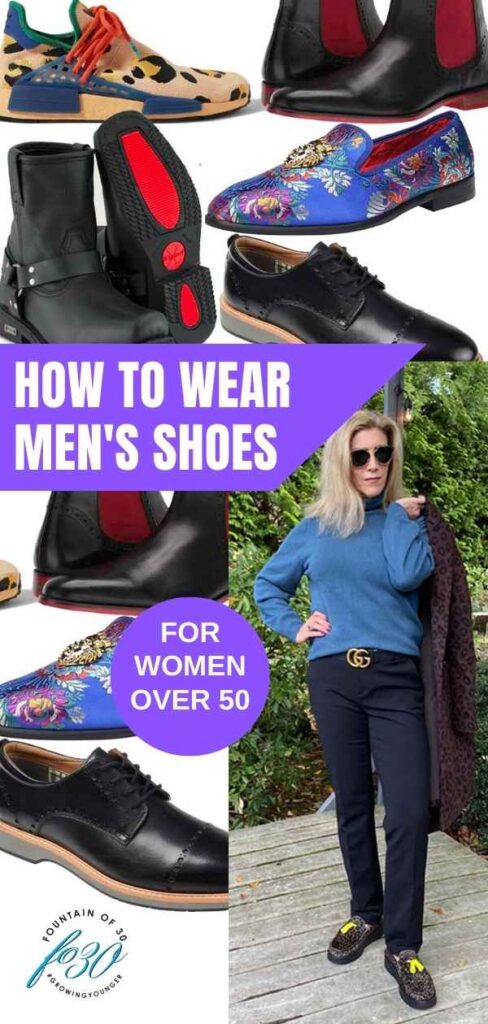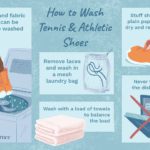The question of whether women can wear men’s shoes might seem trivial at first glance. After all, shoes are shoes, right? However, delving deeper reveals a complex interplay of societal norms, comfort considerations, sizing discrepancies, and evolving fashion trends. For decades, the footwear industry has largely segmented its offerings based on gender, reinforcing the idea that certain styles are inherently “masculine” or “feminine.” This division often limits options and can feel restrictive, particularly for women seeking comfort, practicality, or simply a different aesthetic than what’s traditionally marketed to them.
The rise of gender fluidity and a growing emphasis on personal expression have challenged these established norms. More and more, individuals are prioritizing comfort and style over rigid adherence to gendered expectations. This shift is evident in fashion runways, street style trends, and the increasing popularity of unisex clothing and accessories. Women are actively exploring menswear options, including shoes, to create unique and empowering looks. But navigating the world of men’s footwear can be daunting. Sizing systems differ, and the overall construction of men’s shoes may not always be ideal for women’s feet. Understanding these nuances is crucial for making informed choices and finding the perfect fit.

Moreover, the conversation extends beyond mere aesthetics. Accessibility and practicality also play a significant role. Men’s shoes often offer features that are lacking in women’s designs, such as wider widths, more robust construction, and a greater emphasis on support. For women with specific foot conditions or those who simply prefer a more comfortable and durable shoe, men’s footwear can provide a viable and often superior alternative. Ultimately, the decision of whether or not to wear men’s shoes is a personal one. However, understanding the potential benefits, challenges, and practical considerations can empower women to make informed choices that align with their individual needs and preferences. This article aims to provide a comprehensive guide to navigating the world of men’s footwear, offering practical advice and insights to help women confidently explore their options and break free from traditional gendered constraints.
This exploration isn’t just about fashion; it’s about empowerment, comfort, and challenging societal norms. It’s about recognizing that style should be a reflection of individual identity, not a rigid adherence to outdated expectations. By understanding the nuances of sizing, construction, and style, women can confidently navigate the world of men’s footwear and find shoes that not only look great but also feel comfortable and empower them to express their unique selves.
Navigating the World of Men’s Shoe Sizing
One of the most significant hurdles women face when considering men’s shoes is understanding the sizing differences. The US sizing system, while seemingly straightforward, varies between men’s and women’s shoes. A woman who typically wears a size 8 in women’s shoes won’t necessarily wear the same size in men’s. Understanding the conversion is crucial to avoid ill-fitting shoes and potential discomfort.
The Size Conversion Conundrum
Generally, to convert from women’s to men’s sizing in the US, you need to subtract approximately 1 to 1.5 sizes. For example, a woman’s size 8 would typically translate to a men’s size 6.5 or 7. However, this is just a general guideline, and variations can occur between brands and styles. Some brands might run larger or smaller than others, so it’s always best to consult a specific brand’s size chart or read customer reviews for more accurate information.
- General Rule: Subtract 1 to 1.5 sizes from your women’s size.
- Brand Variation: Always check the brand’s specific size chart.
- Read Reviews: See what other customers say about sizing accuracy.
Beyond Length: Width Considerations
Size isn’t just about length; width is equally important. Men’s shoes are often wider than women’s shoes, which can be a benefit for women with wider feet. However, for women with narrower feet, the extra width can lead to slippage and discomfort. If you have narrow feet, look for men’s shoes that are specifically designed for a narrower fit or consider adding insoles to take up some of the extra space.
Many women find that men’s athletic shoes are particularly well-suited to their needs because they often offer a wider toe box and more support. This can be especially beneficial for activities like running or hiking. However, it’s crucial to try on the shoes before purchasing them to ensure a comfortable and secure fit.
Expert Insight: Podiatrists often recommend men’s shoes for women with foot conditions like bunions or hammertoes because they tend to offer more room in the toe box, reducing pressure and discomfort. Always consult with a podiatrist for personalized recommendations.
Real-World Example: Sarah, a marathon runner, struggled to find comfortable running shoes in the women’s section. After trying several pairs of men’s running shoes, she discovered that the wider toe box and more robust support provided a significantly better fit and reduced her risk of blisters. She now exclusively wears men’s running shoes.
The following table illustrates a general size conversion chart. Remember to always verify with the manufacturer’s specific sizing guide.
| Women’s US Size | Men’s US Size (Approximate) |
|---|---|
| 6 | 4.5 |
| 7 | 5.5 |
| 8 | 6.5 |
| 9 | 7.5 |
| 10 | 8.5 |
Ultimately, the best way to ensure a proper fit is to try on the shoes in person. If that’s not possible, order from a retailer with a generous return policy so you can exchange them if necessary. Don’t be afraid to experiment with different sizes and widths until you find the perfect fit. Comfort is key!
Style Considerations and Breaking Gender Norms
Beyond sizing, style is a crucial consideration when women venture into the world of men’s shoes. While some styles are easily adaptable and can seamlessly blend into a woman’s wardrobe, others may require a more deliberate approach to styling. Breaking down traditional gender norms in fashion allows for greater freedom of expression and opens up a wider range of possibilities.
Embracing and Adapting Masculine Styles
Certain styles of men’s shoes, such as loafers, oxfords, and Chelsea boots, have already crossed over into women’s fashion and are widely accepted as unisex or androgynous. These styles are versatile and can be easily incorporated into a variety of outfits, from casual jeans and a t-shirt to more formal dresses and skirts. The key is to choose styles that complement your personal aesthetic and make you feel confident.
- Loafers: A classic choice that can be dressed up or down.
- Oxfords: Add a touch of sophistication to any outfit.
- Chelsea Boots: Versatile and stylish, perfect for everyday wear.
Challenging Gendered Expectations
One of the most exciting aspects of wearing men’s shoes is the opportunity to challenge traditional gendered expectations. By embracing styles that are typically associated with masculinity, women can make a bold statement and assert their individuality. This can be particularly empowering in professional settings, where wearing a pair of well-polished men’s oxfords can convey confidence and authority.
However, it’s important to be mindful of the context and to choose styles that are appropriate for the occasion. A pair of heavy-duty work boots, for example, might not be the best choice for a formal event. But a pair of stylish men’s sneakers can be a great way to add a touch of edginess to a casual outfit.
Case Study: A recent study by a fashion magazine found that women who wear traditionally masculine clothing, including shoes, are often perceived as more confident and assertive. This suggests that clothing can have a significant impact on how we are perceived by others.
Practical Application: Consider pairing a flowing maxi dress with a pair of chunky men’s combat boots for a contrasting and unexpected look. This combination can be both stylish and comfortable, and it sends a clear message that you’re not afraid to break the rules.
Expert Insight: Fashion stylists often recommend incorporating elements of menswear into women’s wardrobes to create a more balanced and interesting look. This can involve borrowing specific items, such as shoes, or simply drawing inspiration from menswear silhouettes and textures.
The key to successfully incorporating men’s shoes into your wardrobe is to experiment and find what works best for you. Don’t be afraid to try new things and to challenge your own preconceived notions about what is “masculine” or “feminine.” Fashion is all about self-expression, so have fun with it!
Comfort and Practicality: The Underrated Benefits
While style is certainly a major consideration, the comfort and practicality of men’s shoes are often overlooked. Men’s shoes are typically designed with a focus on functionality and durability, which can be a significant advantage for women seeking comfortable and supportive footwear. In many cases, men’s shoes can offer superior comfort and support compared to their women’s counterparts.
Superior Construction and Support
Men’s shoes often feature more robust construction and a greater emphasis on support than women’s shoes. This can be particularly beneficial for women who spend a lot of time on their feet or who have foot conditions that require extra support. The use of sturdier materials and more substantial cushioning can make men’s shoes a more comfortable and durable option for everyday wear.
- Sturdier Materials: Often made with thicker leather or more durable synthetic materials.
- Enhanced Cushioning: Provides better shock absorption and reduces foot fatigue.
- Superior Arch Support: Helps to maintain proper foot alignment and prevent pain.
Addressing Specific Foot Conditions
For women with foot conditions like plantar fasciitis, bunions, or hammertoes, men’s shoes can provide a welcome relief. The wider toe box and more supportive construction can help to alleviate pressure and reduce pain. In some cases, men’s shoes may be the only option that provides the necessary level of comfort and support.
Data Comparison: A study comparing the comfort levels of men’s and women’s work boots found that men’s boots consistently scored higher in terms of comfort and support, particularly for women who worked in physically demanding jobs.
Real-World Example: Maria, a nurse who spends long hours on her feet, found that men’s work boots provided significantly better support and cushioning than any of the women’s shoes she had tried. She now exclusively wears men’s work boots to work, and her foot pain has significantly decreased.
Expert Insight: Podiatrists often recommend men’s shoes for women with foot problems because they tend to offer a more anatomically correct fit and better support. They also point out that men’s shoes are often designed with a greater emphasis on functionality, which can be a major advantage for women who prioritize comfort and practicality.
Furthermore, men’s shoes are often designed with a greater emphasis on durability, which means they tend to last longer than women’s shoes. This can be a significant cost-saving in the long run, as you won’t have to replace your shoes as frequently. Investing in quality footwear is always a wise decision.
Summary: Embracing Choice and Challenging Conventions
The exploration of whether women can wear men’s shoes reveals a multifaceted landscape that extends far beyond simple fashion choices. It delves into societal norms, comfort considerations, sizing complexities, and the evolving dynamics of personal expression. The key takeaway is that the decision to wear men’s shoes is ultimately a personal one, guided by individual needs, preferences, and a willingness to challenge conventional boundaries.
We’ve established that navigating men’s shoe sizing requires careful attention. The standard conversion rule of subtracting 1 to 1.5 sizes from your women’s size is a helpful starting point, but brand-specific size charts and customer reviews are crucial for ensuring an accurate fit. Width is another critical factor, with men’s shoes often offering a wider fit that can be both beneficial and challenging depending on individual foot shape. Remember, comfort should always be the top priority.
Style-wise, embracing traditionally masculine styles can be empowering and offer a unique avenue for self-expression. Loafers, oxfords, and Chelsea boots have already blurred gender lines and can be seamlessly integrated into a woman’s wardrobe. Experimenting with unexpected combinations, like pairing a flowing dress with combat boots, can create striking and individualistic looks. The goal is to find styles that resonate with your personal aesthetic and make you feel confident and comfortable.
The practical benefits of men’s shoes often outweigh purely aesthetic considerations. Superior construction, enhanced support, and the use of more durable materials make men’s shoes a viable option for women seeking comfort and longevity. For individuals with specific foot conditions, such as plantar fasciitis or bunions, the wider toe box and robust support of men’s shoes can provide significant relief and improve overall foot health. Podiatrists frequently recommend men’s shoes for women with such conditions, emphasizing the importance of anatomical fit and functional design.
- Prioritize Comfort: Fit and support are paramount.
- Embrace Experimentation: Don’t be afraid to try different styles.
- Challenge Norms: Fashion is a form of self-expression.
- Consider Practicality: Durability and support are valuable assets.
- Consult Experts: Seek professional advice when needed.
Ultimately, the question isn’t whether women *can* wear men’s shoes, but rather *how* they can do so in a way that empowers them, enhances their comfort, and allows them to express their unique style. By understanding the nuances of sizing, style, and construction, women can confidently explore the world of men’s footwear and find shoes that perfectly complement their individual needs and preferences. This journey is about breaking down barriers, embracing individuality, and prioritizing personal comfort above all else.
Frequently Asked Questions (FAQs)
What is the general size conversion from women’s to men’s shoes?
As a general rule, subtract 1 to 1.5 sizes from your usual women’s US shoe size to find your approximate men’s size. For example, if you wear a women’s size 8, you would likely wear a men’s size 6.5 or 7. However, this is just a guideline, and it’s always best to check the specific brand’s size chart, as sizing can vary between manufacturers.
Are men’s shoes wider than women’s shoes?
Yes, generally men’s shoes are wider than women’s shoes. This can be a benefit for women with wider feet, as it provides more room and reduces pressure. However, for women with narrower feet, the extra width can lead to slippage and discomfort. If you have narrow feet, consider looking for men’s shoes specifically designed for a narrower fit or using insoles to take up extra space.
What styles of men’s shoes are most easily adaptable for women?
Several styles of men’s shoes are easily adaptable for women, including loafers, oxfords, Chelsea boots, and certain types of sneakers. These styles are versatile and can be incorporated into a variety of outfits, from casual to more formal. The key is to choose styles that complement your personal aesthetic and make you feel confident.
Can men’s shoes help with specific foot conditions?
Yes, men’s shoes can be beneficial for women with specific foot conditions like plantar fasciitis, bunions, or hammertoes. The wider toe box and more supportive construction of men’s shoes can help to alleviate pressure and reduce pain. Podiatrists often recommend men’s shoes for women with these conditions due to their anatomical fit and functional design.
Are men’s shoes more durable than women’s shoes?
In many cases, yes, men’s shoes are more durable than women’s shoes. This is because they are often made with sturdier materials and more robust construction. This can be a significant advantage for women who are looking for shoes that will last longer and withstand more wear and tear. Investing in quality footwear, regardless of gender designation, is always a worthwhile investment.



